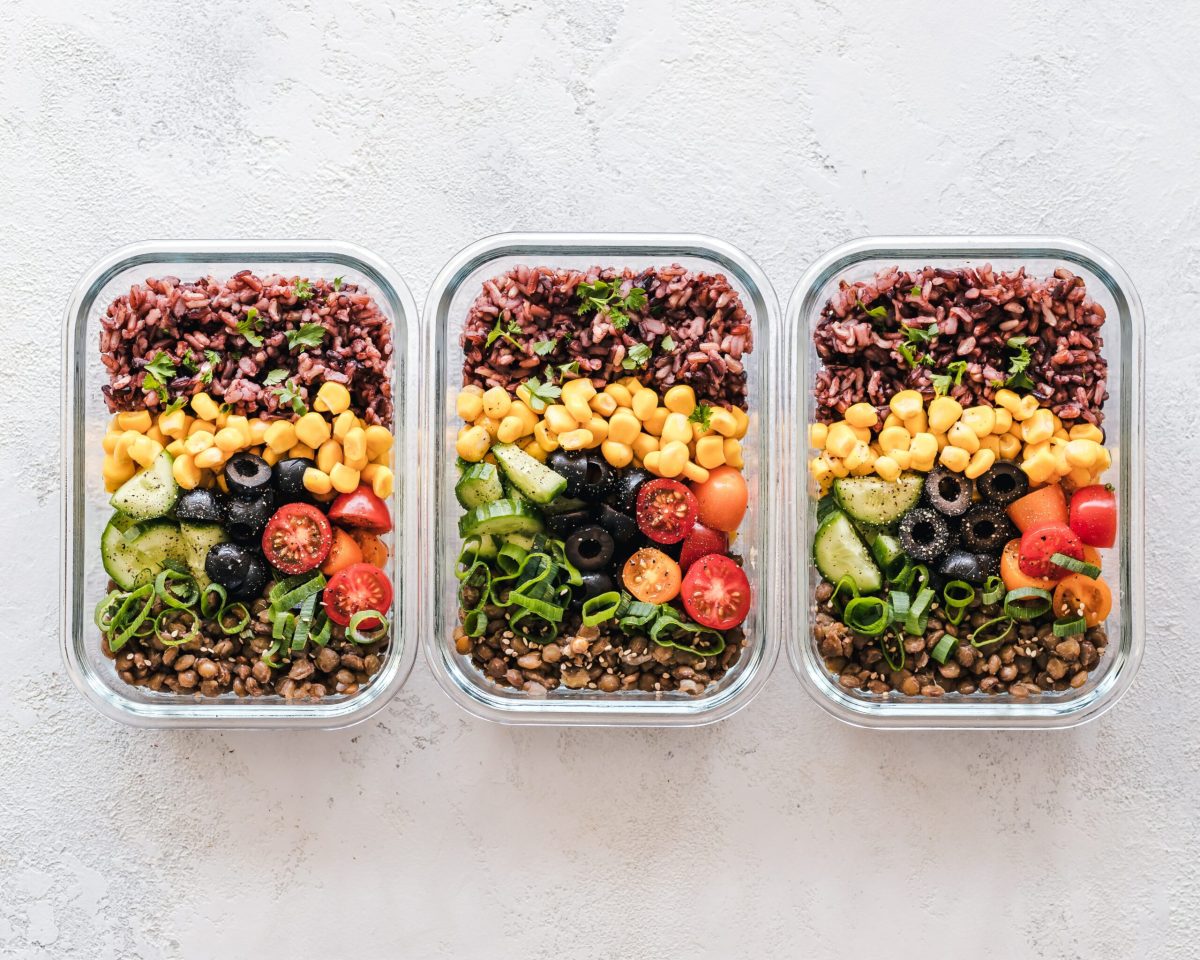Imagine vibrant bowls brimming with flavor and nutrition, meticulously crafted to support your diabetes management journey. These aren’t just lunches; they’re carefully balanced masterpieces designed to keep your blood sugar stable and your energy levels soaring. We’ll explore delicious, diabetes-friendly recipes featuring the freshest ingredients, highlighting the importance of portion control and the joy of mindful eating.
This guide delves into the art of creating satisfying and healthy lunch bowls tailored for individuals managing diabetes. We’ll uncover the secrets to selecting low-glycemic index ingredients, incorporating lean proteins and healthy fats, and mastering portion control techniques. Discover practical tips, delicious recipes, and visually appealing step-by-step instructions to transform your lunchtime routine into a delicious and empowering experience.
Diabetes-Friendly Lunch Bowls
Creating satisfying and nutritious lunch bowls is key to managing diabetes. These recipes focus on balanced macronutrients, portion control, and delicious flavors to help you maintain healthy blood sugar levels throughout your day. Remember to consult with your doctor or a registered dietitian to personalize your meal plan based on your individual needs and health status.
Diabetes-Friendly Lunch Bowl Recipes
These five recipes offer a variety of flavors and textures, all while keeping your blood sugar in mind. Each recipe emphasizes lean protein, healthy fats, and complex carbohydrates for sustained energy and satiety. Portion sizes are suggested to keep calorie counts within a reasonable range for diabetes management.
| Recipe Name | Ingredients | Summary | Calorie Count (per serving) |
|---|---|---|---|
| Mediterranean Quinoa Bowl | 1 cup cooked quinoa, ½ cup chopped cucumber, ½ cup chopped tomatoes, ¼ cup crumbled feta cheese, 2 oz grilled chicken breast, 1 tbsp olive oil, lemon juice, herbs (oregano, parsley). | A vibrant and flavorful bowl featuring protein-rich chicken, fiber-rich quinoa, and healthy fats from olive oil. | 450 |
| Lentil and Vegetable Curry Bowl | ½ cup red lentils, 1 cup mixed vegetables (broccoli, carrots, peas), ½ cup low-sodium vegetable broth, 1 tbsp curry powder, ½ tsp cumin, ½ tsp turmeric, a squeeze of lime juice. | A hearty and warming bowl packed with fiber and plant-based protein. | 380 |
| Salmon and Avocado Bowl | 4 oz baked salmon, ½ avocado, ½ cup mixed greens, ¼ cup cherry tomatoes, 1 tbsp olive oil, lemon juice, black pepper. | A rich and satisfying bowl combining healthy fats from salmon and avocado with fiber-rich greens. | 400 |
| Chicken and Black Bean Bowl | 4 oz grilled chicken breast, ½ cup black beans, ½ cup brown rice, ½ cup corn salsa, ½ avocado, 1 tbsp salsa. | A protein-packed bowl with a satisfying mix of textures and flavors. | 420 |
| Tofu and Edamame Bowl | 4 oz firm tofu (cubed and pan-fried), ½ cup edamame, ½ cup brown rice, ½ cup chopped bell peppers, 2 tbsp soy sauce (low sodium), 1 tbsp sesame oil. | A vegetarian bowl rich in protein and fiber, featuring the nutty flavor of edamame and tofu. | 350 |
Detailed Nutritional Information
The nutritional information provided below is an approximation and may vary slightly depending on the specific ingredients used. These values are estimates per serving.
Mediterranean Quinoa Bowl: Approximately 25g protein, 40g carbohydrates (including 8g fiber), 15g fat.
Lentil and Vegetable Curry Bowl: Approximately 18g protein, 50g carbohydrates (including 12g fiber), 10g fat.
Salmon and Avocado Bowl: Approximately 30g protein, 20g carbohydrates (including 5g fiber), 25g fat.
Chicken and Black Bean Bowl: Approximately 35g protein, 45g carbohydrates (including 10g fiber), 12g fat.
Tofu and Edamame Bowl: Approximately 20g protein, 40g carbohydrates (including 8g fiber), 15g fat.
Ingredient Selection and Preparation

Crafting diabetes-friendly lunch bowls hinges on mindful ingredient selection. Prioritizing low-glycemic index (GI) foods helps regulate blood sugar levels, preventing spikes and crashes. This approach ensures sustained energy throughout the afternoon and contributes to overall health management. The strategic combination of lean proteins, healthy fats, and non-starchy vegetables creates a satisfying and balanced meal.
The benefits of incorporating lean proteins, healthy fats, and non-starchy vegetables are multifaceted. Lean proteins, such as grilled chicken breast or chickpeas, provide satiety and support muscle mass. Healthy fats, like avocado or a drizzle of olive oil, contribute to feeling full and aid nutrient absorption. Non-starchy vegetables, such as broccoli, spinach, and bell peppers, are packed with vitamins, minerals, and fiber, further enhancing satiety and promoting digestive health. These components work synergistically to create a lunch bowl that is both delicious and beneficial for diabetes management.
Preparing a Diabetes-Friendly Lunch Bowl: A Step-by-Step Guide
This guide details the preparation of a vibrant and nutritious lunch bowl, focusing on efficiency and time-saving techniques.
- Protein Preparation (10 minutes): Begin by preparing your protein source. Imagine a juicy, grilled chicken breast, its surface glistening with a light char. Alternatively, a can of chickpeas, rinsed and drained, offers a quick and equally protein-rich option. If using chicken, season it simply with salt, pepper, and perhaps a touch of paprika before grilling to perfection. The cooked chicken, once cooled slightly, can be easily shredded or cubed for easy incorporation into the bowl.
- Vegetable Prep (5 minutes): Next, prepare your vegetables. Picture a colorful medley of chopped bell peppers – vibrant red, sunny yellow, and deep green – their crispness inviting. Add to this a handful of baby spinach leaves, their deep green hue a testament to their nutritional value. For a satisfying crunch, consider adding some thinly sliced cucumber. The quick chopping of these vegetables is easily accomplished in a matter of minutes.
- Healthy Fat Addition (1 minute): A ripe avocado, halved and sliced, adds a creamy texture and healthy fats. Its rich green flesh provides a visual contrast to the other ingredients. Alternatively, a tablespoon of olive oil, drizzled lightly over the completed bowl, offers a similar healthy fat profile.
- Assembly (2 minutes): To assemble, layer the ingredients in a bowl. Start with a bed of spinach, then add the chicken or chickpeas, followed by the colorful bell peppers and cucumber slices. Finally, top with the avocado slices or a drizzle of olive oil.
This entire process, from start to finish, takes approximately 18 minutes, demonstrating that preparing a healthy and diabetes-friendly lunch bowl can be both efficient and enjoyable. The final product is a visually appealing and nutritionally balanced meal, showcasing a variety of colors and textures.
Portion Control and Meal Planning
Mastering portion control is paramount for individuals with diabetes. Consistent blood sugar levels depend heavily on the precise amount of carbohydrates, proteins, and fats consumed at each meal. Inconsistent portion sizes lead to unpredictable blood sugar fluctuations, potentially triggering hyperglycemia or hypoglycemia. Precise portioning helps maintain a steady blood sugar level, minimizing the risk of these dangerous swings and improving overall diabetes management. Planning ahead ensures you’re consistently eating balanced, diabetes-friendly meals.
Precise portion control is achieved through mindful eating and the strategic use of tools. Visual aids such as measuring cups and food scales transform the abstract concept of portion size into a tangible, measurable reality. These tools allow for consistent and accurate measurement of ingredients, removing guesswork and promoting better control over carbohydrate intake – a key factor in blood sugar regulation. This translates to more predictable blood sugar levels and a significant reduction in the likelihood of extreme fluctuations.
Strategies for Planning Diabetes-Friendly Lunch Bowls
Planning your lunch bowls for the week ahead significantly simplifies the process of maintaining consistent portion control. A well-structured plan minimizes impulsive food choices and ensures that each meal aligns with your dietary needs and goals. This proactive approach fosters better blood sugar management and promotes healthier eating habits. Visualizing your weekly meals beforehand reduces the likelihood of making unhealthy choices when hunger strikes.
- Sunday Prep: Wash and chop vegetables, measure out grains (like quinoa or brown rice), and portion proteins (such as grilled chicken or fish) into individual containers. This reduces preparation time during the week and minimizes the temptation to grab less healthy options.
- Theme Days: Assign a theme to each day (e.g., Mediterranean Monday, Taco Tuesday, etc.). This makes meal planning more engaging and simplifies the selection of ingredients. It also allows for variety and prevents meal boredom.
- Leftover Repurposing: Plan to use leftovers from dinner to create quick and easy lunch bowls. For example, leftover roasted vegetables and grilled chicken can be combined with a small portion of quinoa for a satisfying and balanced lunch.
- Variety is Key: Incorporate a variety of colorful vegetables, lean proteins, and whole grains to ensure you’re getting a wide range of nutrients. This not only aids in blood sugar control but also makes your meals more visually appealing and enjoyable.
Utilizing Visual Aids for Portion Control
Visual aids like measuring cups and food scales are invaluable for achieving accurate portion sizes. These tools eliminate guesswork and ensure consistency in your meal preparation, leading to better blood sugar management. The ability to precisely measure ingredients is crucial for maintaining a balanced diet and preventing overconsumption of carbohydrates.
Imagine a measuring cup filled to the 1/2 cup line with cooked brown rice. This provides a clear visual representation of the intended portion size. Similarly, a food scale accurately weighs out a 4-ounce portion of grilled chicken breast. These visual cues make it easier to adhere to your meal plan and track your carbohydrate intake, preventing blood sugar spikes.
Using these tools consistently will lead to a greater awareness of portion sizes. Over time, you’ll develop a better “eye” for appropriate portions, making it easier to control your intake even without the measuring tools. This visual learning process empowers you to make healthier choices instinctively.
Mastering the art of creating diabetes-friendly lunch bowls isn’t just about managing blood sugar; it’s about embracing a lifestyle of vibrant health and deliciousness. By understanding the principles of portion control, ingredient selection, and mindful meal planning, you can transform your lunch into a powerful tool for managing your diabetes and enhancing your overall well-being. The journey to healthier eating is a delicious adventure – embark on it today!
Essential FAQs
Can I freeze these lunch bowls for later?
Yes, many of these recipes freeze well. Assemble the bowls without the dressing or easily-wilting ingredients, then freeze. Add those components when reheating.
What if I have other dietary restrictions besides diabetes?
Many of the recipes can be easily adapted. Substitute ingredients as needed to accommodate allergies or preferences (e.g., gluten-free pasta, soy-free alternatives).
How often should I eat these lunch bowls?
These bowls can be a part of a healthy, balanced diet. Consult your doctor or a registered dietitian to determine the appropriate frequency for your individual needs.
Are these recipes suitable for type 1 and type 2 diabetes?
The principles of portion control and balanced macronutrients apply to both type 1 and type 2 diabetes. However, individual needs may vary; consult your healthcare provider for personalized guidance.


